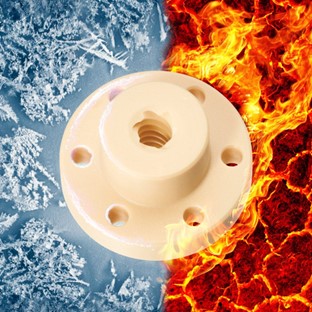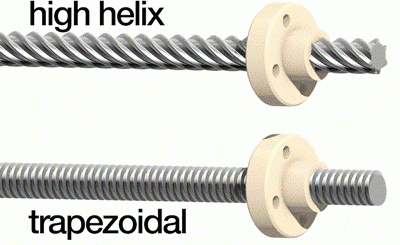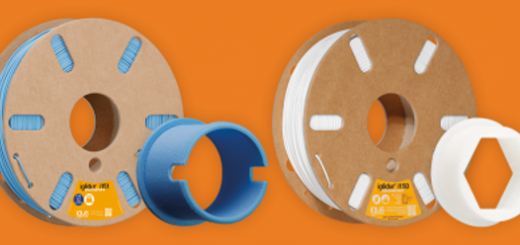Temperature Effects on Lead Screw Nuts
By Zoe Moser (Edited by Kevin Wright)

Lead screw drives are used in a wide variety of industries and applications: from automation machines, to robotics, to material handling. Demands on lead screw drives can include high or low loads, as well as high or low speeds. Environmental influences such as temperature can play a large role on a lead screw’s performance. Distinctions can be made between the following lead screw drives: lubricated ball screw drives, dry-running polymer lead screw drives and lubricated metal systems. In this article, we will focus on dry-running polymer lead screw nuts made of iglide materials.
Up to which temperature can I use the igus® lead screw nut?
igus offers polymer lead screw nuts that work with higher application temperatures. For example, lead screw nuts made of the high-performance polymer iglidur® J350 or iglide X are suitable for long-term use at temperatures of up to +150°C and 250°C respectively.
However, lead screw nuts have to perform not only at high, but also at low temperatures. By default, our dryspin lead screw nut materials are intended for applications in the lower temperature range down to -20°C. For applications in even lower or higher temperatures, a detailed analysis is necessary. Adjustments to running clearances at room temperature can be made to ensure the lead screw nut will operate effectively at temperature below -20°C. Please feel free to contact us in these cases.
Dryspin lead screw technology offers lead screw nuts from six different standard materials. The different material options are designed for specific applications. Our lead screw nuts made of iglide® J, for example, are all-rounders and work in almost every application. However, this material is also limited when it comes to the temperature of the application.
We have summarized the differences between the individual standard materials for lead screw nuts in the table below:
| Unit | iglide® J | iglide® J350 | iglide® R | iglide® A180 | iglide® E7 | iglide® J200 | |
| Max. long-term application temperature | [°C] | + 90 | +150 | + 90 | + 90 | + 70 | + 90 |
| Max. short-term operating temperature | [°C] | + 120 | + 150 | + 90 | + 90 | + 70 | + 90 |
| Min. operating temperature | [°C] | – 20 | – 20 | – 20 | – 20 | – 20 | – 20 |
Should your operating temperature be above these limits, please feel free to contact us. Visit our lead screw system page for more information about our lead screws and lead screw nuts.



